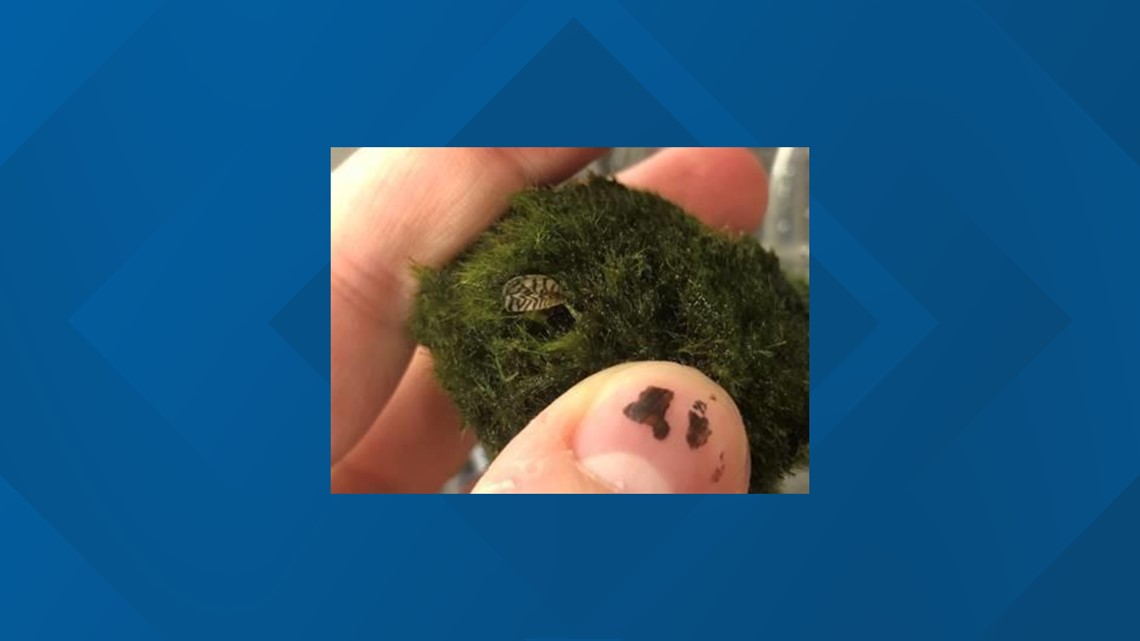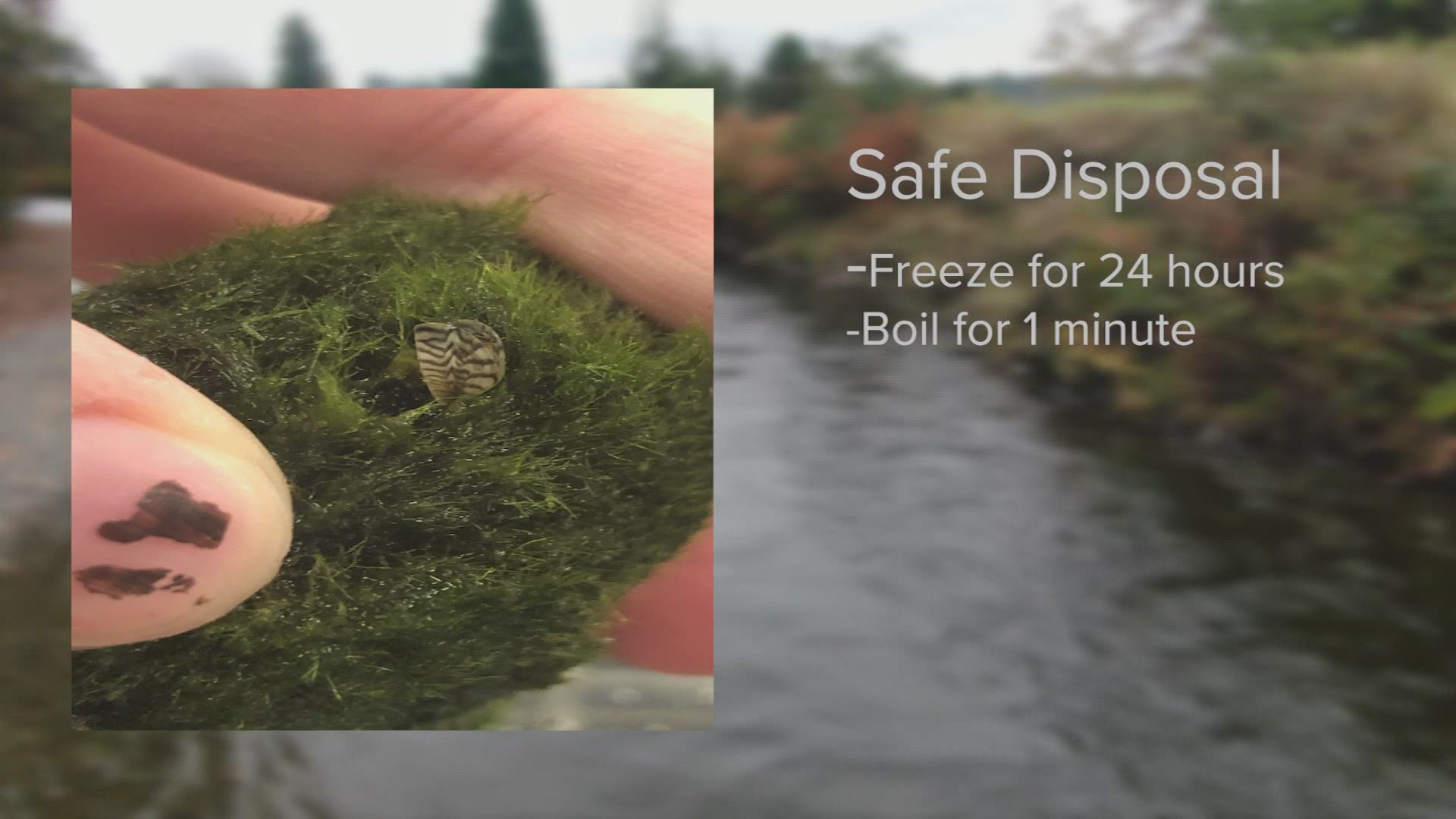JEFFERSON CITY, Mo. — Zebra mussels, the invasive species that cause extensive damage to waterways, have discovered another way to inflict harm to the habitat and economy.
They recently have been found in a type of algae – known as “moss balls” – that are popular with aquarium owners.
Because of this, the Missouri Department of Conservation, as well as fisheries experts across the country, are asking aquarium owners and pet store staff to examine moss balls for these troublesome mollusks. Moss balls that contain zebra mussels have been found in Missouri.
Marimo is a filamentous algae that grows into green, velvety moss balls. In the wild, marimo is found mainly in Europe and Asia (primarily Japan). Their aesthetic appeal has made these plant-like organisms popular in the aquarium trade.
It has been discovered that some moss balls being commercially sold for aquariums in several states, including Missouri, contained zebra mussels. Experts don’t know how zebra mussels got inside the moss balls, but this development reveals a new way the non-native pests can spread.


KING 5 in Seattle reported that the Washington Department of Fish and Wildlife found "at least a dozen zebra mussels" in moss balls at a popular chain pet store in the city.
Any aquarium containing moss balls infected with zebra mussels potentially has zebra mussel larvae (called veligers) in its water. When aquarium water is switched out or if the contents get dumped into a nearby creek or lake, it could introduce zebra mussels into a new body of water.
This further emphasizes what fisheries biologists in Missouri and other states say often: Never dispose of aquarium contents in a nearby body of water because of the harmful non-native organisms this could introduce into local ecosystems. In the case of zebra mussels, the problems can be both biological and economical.
Just in the last week, zebra mussels have turned up in Florida, Colorado, Idaho, Montana, New York and Pennsylvania. Once they inhabit a waterway, their exponential spread can do massive damage.
The huge clusters these fingernail-sized mussels can form (sometimes as thick as a million mussels per square meter) can cause operational problems for pipes and other water-intake equipment. Their clustering activities can also kill native mussels and disrupt aquatic food chains.
The discovery of zebra mussels in moss balls means aquarium owners play an invaluable part in preventing the spread of zebra mussels, too. If you find zebra mussels in your aquarium, MDC advises to remember these three words – destroy, dispose, drain.
Follow these guidelines, as provided by the Missouri Department of Conservation and US Fish & Wildlife Service:
Destroy in one of three ways:
- Freeze: Place moss ball into a sealable plastic bag and freeze for at least 24 hours.
- Boil: Place the moss ball in boiling water for at least one minute.
- Bleach/vinegar: Submerge the moss ball in chlorine bleach or undiluted white vinegar for 20 minutes.
Dispose: Once one of the above-listed “destroy” steps have been taken, dispose of the moss ball and any of its packaging in a sealed plastic bag in the trash. If vinegar, boiling water or bleach was used, the liquid can be disposed down a household drain. Never pour into a storm drain where it could enter and damage local waterways.
Drain: Drain and clean the aquarium. When draining and cleaning your aquarium, it’s important to follow these steps:
- Collect any fish or other living organisms and place them in another container, with water from a separate, uncontaminated source.
- Sterilize the contaminated aquarium water by adding one-quarter teaspoon bleach for each gallon of water. Let the water sit for at least 10 minutes and then dispose of the sterilized water down a household drain.
- Decontaminate the aquarium and accessories using one of the following methods, ensuring that the method you choose is in accordance with the manufacturer’s recommendations:
- Hot water method: Pour water that is 140 degrees F into tank, covering all accessories. Allow water to sit for a minimum of one minute.
- Disinfection method: Make a disinfection solution using one (1) cup of bleach per gallon of water. Soak the aquarium, substrate, rocks, décor and filter media in the bleach water solution for at least 10 minutes. Rinse off all items prior to setting up the aquarium. Dispose of the previously used filter media and replace it with new media.
- Once the decontamination steps are completed, allow tank and accessories to dry for at least 15 minutes before refilling with water. If the disinfection method (see above) was used, add a dechlorinating product to neutralize any residual chlorine prior to reintroducing aquatic life.
- It is recommended that aquarium owners do another water change within a week and continue to monitor the tank for any unusual or unexpected aquatic life. If needed repeat the steps listed above.
More information about how to take care of zebra mussel-infected moss balls can be found on the U.S. Fish & Wildlife Service's website here.
More information about how to prevent the spread of zebra mussels in Missouri can be found on the Missouri Department of Conservation's website.

